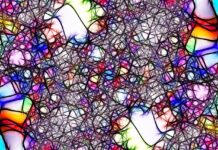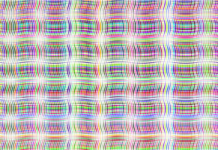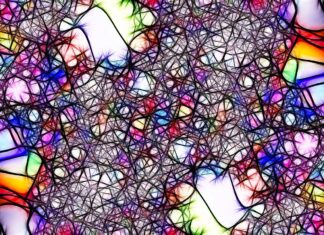Space complexity is a fundamental concept in computer science that refers to the amount of memory or space required by an algorithm to solve a problem. It measures the resources consumed by an algorithm in terms of the amount of memory it needs to allocate during its execution. Understanding space complexity is crucial for designing efficient algorithms and optimizing the use of memory.
Space complexity is often expressed in terms of the amount of additional space required by an algorithm as a function of the input size. It helps analyze how the memory requirements of an algorithm grow with respect to the size of the input. By considering the space complexity of an algorithm, developers can make informed decisions about memory usage, select appropriate data structures, and avoid memory-related issues such as excessive memory consumption, memory leaks, or crashes.
Here are ten important things to know about space complexity:
1. Space Complexity Notation: Space complexity is denoted using the big O notation, similar to time complexity. For example, O(1) denotes constant space complexity, O(n) denotes linear space complexity, and O(n^2) denotes quadratic space complexity.
2. Auxiliary Space vs. Space Complexity: When analyzing space complexity, it is important to distinguish between auxiliary space and space complexity. Auxiliary space refers to the additional space used by an algorithm beyond the input space, excluding the space required to store the input itself. Space complexity, on the other hand, includes both the input space and any additional space used by the algorithm.
3. Space Complexity Factors: Several factors affect the space complexity of an algorithm, such as the size and type of input data, the number of variables and data structures used, and the recursive calls made by the algorithm. Understanding these factors helps in estimating and optimizing space usage.
4. Constant Space Complexity (O(1)): Algorithms with constant space complexity use a fixed amount of memory that does not depend on the input size. They are considered highly efficient in terms of memory usage. Examples include simple arithmetic operations, variable assignments, and basic data manipulations.
5. Linear Space Complexity (O(n)): Algorithms with linear space complexity require memory that grows linearly with the size of the input. They typically process each input element once and store a constant amount of additional data per element. Examples include linear scans, array manipulations, and list traversals.
6. Polynomial Space Complexity (O(n^k)): Algorithms with polynomial space complexity have memory requirements that grow as a polynomial function of the input size. Polynomial space complexities like O(n^2) or O(n^3) are commonly encountered in problems involving nested loops or multi-dimensional data structures.
7. Logarithmic Space Complexity (O(log n)): Algorithms with logarithmic space complexity have memory requirements that grow logarithmically with the input size. These algorithms often divide the input into smaller parts for processing and use space proportional to the number of divisions. Binary search algorithms are an example of logarithmic space complexity.
8. Recursive Algorithms and Space Complexity: Recursive algorithms can have significant space complexity due to the stack space required for function calls. Each recursive call adds a new frame to the call stack, consuming additional memory. Tail recursion and memoization techniques can be employed to optimize space usage in recursive algorithms.
9. Space Complexity Trade-offs: Sometimes, reducing time complexity can lead to increased space complexity, and vice versa. It is crucial to strike a balance between the two while optimizing algorithms. Analyzing both time and space complexity helps in making informed decisions about trade-offs based on the requirements of the problem and the available resources.
10. Space Complexity Analysis Techniques: Several techniques can be used to analyze space complexity, including manual analysis, space counting, recurrence relations, and the master theorem. These techniques help estimate and analyze the memory requirements of an algorithm and provide insights into potential space optimizations.
Understanding and managing space complexity is vital for developing efficient algorithms and ensuring optimal memory usage. By considering space complexity during the design and implementation stages, developers can make informed decisions about data structures, algorithmic strategies, and trade-offs between time and space efficiency.
When analyzing space complexity, it is important to consider both the auxiliary space and the overall space complexity. Auxiliary space refers to the additional memory used by an algorithm beyond the input space, excluding the space required to store the input itself. It includes variables, data structures, and any other memory allocations made during the execution of the algorithm. On the other hand, space complexity encompasses both the input space and the auxiliary space.
Algorithms with constant space complexity (O(1)) are highly efficient as they require a fixed amount of memory regardless of the input size. Basic operations such as arithmetic calculations, variable assignments, and data manipulations often fall into this category. These algorithms are particularly useful when memory resources are limited or when there is a need for efficient memory utilization.
Linear space complexity (O(n)) algorithms require memory that grows linearly with the input size. They typically process each input element once and store a constant amount of additional data per element. Examples of algorithms with linear space complexity include linear scans, array manipulations, and traversing linked lists. Although linear space complexity is considered reasonable in many scenarios, it is important to be aware of potential optimizations to reduce memory consumption.
Polynomial space complexity (O(n^k)) is common in algorithms involving nested loops or multi-dimensional data structures. These algorithms require memory that grows as a polynomial function of the input size. For instance, algorithms with a time complexity of O(n^2) or O(n^3) often have corresponding polynomial space complexity. It is crucial to analyze and optimize these algorithms carefully to avoid excessive memory usage, especially for larger inputs.
Logarithmic space complexity (O(log n)) algorithms have memory requirements that grow logarithmically with the input size. These algorithms typically divide the input into smaller parts for processing and use space proportional to the number of divisions. Binary search algorithms are a classic example of logarithmic space complexity, where the input size is halved in each iteration. Logarithmic space complexity is highly efficient for large inputs, as memory usage increases at a slower rate compared to the input size.
Recursive algorithms can have significant space complexity due to the stack space required for function calls. Each recursive call adds a new frame to the call stack, consuming additional memory. However, tail recursion and memoization techniques can be employed to optimize space usage in recursive algorithms. Tail recursion involves restructuring a recursive algorithm to eliminate unnecessary stack frames, effectively reducing space complexity. Memoization, on the other hand, involves caching previously computed results to avoid redundant computations, thus optimizing both time and space complexity.
Understanding space complexity trade-offs is essential when optimizing algorithms. Sometimes, reducing time complexity may result in increased space complexity, and vice versa. It is crucial to strike a balance between the two based on the specific requirements of the problem and the available resources. Analyzing both time and space complexity provides a comprehensive understanding of the algorithm’s efficiency and aids in making informed decisions during optimization.
To analyze space complexity, various techniques can be employed, including manual analysis, space counting, recurrence relations, and the master theorem. Manual analysis involves examining the algorithm’s code and identifying memory allocations and deallocations. Space counting involves tracking the amount of memory used at different stages of the algorithm’s execution. Recurrence relations and the master theorem are mathematical techniques used to derive space complexity from the algorithm’s recursive or iterative structure.
In addition to analyzing space complexity during the design and implementation stages, it is important to consider real-world constraints and limitations. The availability of physical memory, the memory requirements of other running processes, and the target hardware environment should be taken into account. It is essential to strike a balance between algorithmic efficiency and practical resource limitations to ensure that the algorithm can run smoothly and reliably in the intended environment.
Furthermore, space complexity analysis is not a one-time task. As algorithms evolve, undergo modifications, or handle larger datasets, it is crucial to reevaluate their space complexity. Optimization opportunities may arise, allowing developers to refine the algorithm’s memory usage and improve its overall efficiency.
Optimizing space complexity often involves employing strategies such as using efficient data structures, reducing redundant memory allocations, reusing memory where possible, and implementing algorithms with lower space complexity alternatives. Choosing the appropriate data structures, such as arrays, linked lists, hash tables, or trees, can significantly impact the space requirements of an algorithm. It is essential to understand the characteristics and trade-offs of different data structures to select the most suitable one for a given problem.
Additionally, considering space complexity alongside time complexity allows for comprehensive algorithm analysis. The choice between optimizing for time or space depends on the specific requirements of the problem at hand. Sometimes, a slight increase in space complexity can result in significant improvements in time efficiency, and vice versa. By balancing these two factors, developers can strike an optimal trade-off that aligns with the needs of the problem and the available resources.
Efficient memory management is another crucial aspect of optimizing space complexity. Proper allocation and deallocation of memory, avoiding memory leaks, and minimizing unnecessary memory copies can all contribute to more efficient memory utilization. In languages that provide manual memory management, such as C or C++, it is essential to release dynamically allocated memory appropriately to prevent memory leaks. In contrast, in languages with automatic memory management, such as Python or Java, the garbage collector handles memory deallocation, but developers should still be mindful of object lifetimes and avoid unnecessary memory consumption.
Finally, it is worth noting that space complexity is not the sole determinant of an algorithm’s efficiency. While optimizing space usage is essential, it should be considered in conjunction with other factors such as time complexity, code readability, maintainability, and scalability. A well-designed algorithm strikes a balance between these factors to provide an optimal solution that meets the requirements of the problem and the available resources.
Space complexity is a critical concept in computer science that measures the amount of memory an algorithm requires to solve a problem. Understanding space complexity allows developers to analyze and optimize memory usage, select appropriate data structures, and strike a balance between time and space efficiency. By considering factors such as auxiliary space, recursive calls, and real-world constraints, developers can design algorithms that perform optimally in terms of memory consumption. Regularly reevaluating and optimizing space complexity, along with other algorithmic considerations, ensures efficient memory management and overall algorithmic efficiency.
In conclusion, space complexity plays a crucial role in designing efficient algorithms and managing memory resources effectively. By understanding and analyzing space complexity, developers can make informed decisions to optimize memory usage, select appropriate data structures, and strike a balance between time and space efficiency. It is essential to continuously monitor and evaluate space complexity throughout the development process, considering factors such as the size and type of input data, the number of variables and data structures used, and the presence of recursive calls. This proactive approach enables developers to identify potential memory bottlenecks, optimize memory usage, and ensure that the algorithm performs efficiently even with large inputs.






















